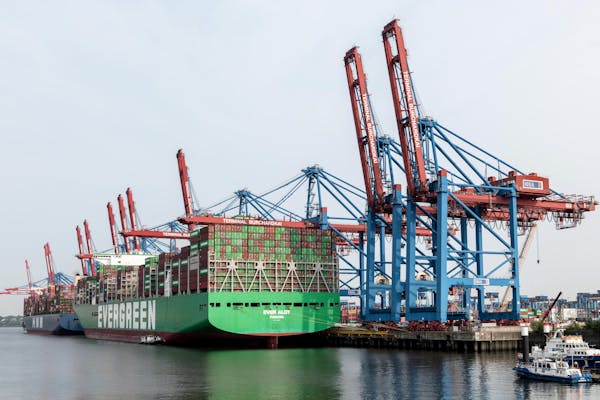Shipping Mold from Guangzhou/Shenzhen, China to Grand Rapids, MI (USA) via Sea Freight
Sea Freight Options: FCL vs. LCL
FCL (Full Container Load):
For larger shipments, such as those involving heavy or bulky molds, FCL is often the preferred shipping method. With FCL, the cargo occupies the entire container (either a 20-foot or 40-foot container), meaning it is not shared with other customers’ goods. This can offer better security, as the cargo is sealed in the container from origin to destination.
- 20FT Container: A 20-foot container is ideal for medium-sized mold shipments.
- 40FT Container (40FTCIF): A 40-foot container is suitable for larger quantities of molds, providing more space and often a more competitive rate per unit.
The terms CIF (Cost, Insurance, and Freight) indicate that the price includes the cost of goods, insurance during transportation, and freight charges. This provides peace of mind to the sender, as the goods are insured during their sea journey.
LCL (Less than Container Load):
If the shipment does not require a full container, LCL is a more economical option. LCL involves sharing container space with other goods, and the cargo is consolidated and deconsolidated at the port. Though slightly more time-consuming than FCL due to additional handling, LCL is a good solution for smaller shipments.
- Transit Time: The estimated transit time for LCL shipments from Guangzhou or Shenzhen to Grand Rapids is approximately 35 days, depending on the specific shipping line and port handling times.

Packaging Molds for Sea Freight
Proper packaging is crucial to ensure that molds are not damaged during the lengthy sea journey. Here’s how you should pack molds for both FCL and LCL shipments:
Custom Wood Crates:
Molds are typically packed in custom-made wooden crates, which provide sturdy protection against any external shocks during transit. The crates should be built according to the size and weight of the molds, ensuring that they fit snugly and are properly supported.Protective Materials:
Inside the crate, molds should be wrapped in bubble wrap or foam padding to prevent any surface scratches or abrasions. Depending on the fragility of the mold, additional cushioning such as airbags or styrofoam can be added to minimize movement within the crate.Waterproofing:
Since molds are often made of metal, it is crucial to prevent rust or corrosion. To protect the molds from moisture, they should be wrapped in plastic film or placed in a waterproof plastic bag before being sealed inside the wooden crate. Additionally, moisture-absorbing desiccant bags can be placed inside to further control humidity levels.Labeling and Documentation:
Accurate labeling is essential. Ensure that the crates are clearly marked with “Fragile” or “Handle with Care” labels. Additionally, the necessary shipping documents, such as the commercial invoice, packing list, and bill of lading, should be securely attached to the outside of the crate.Weight Distribution:
For larger shipments in FCL containers, ensure that the weight is evenly distributed within the container to avoid any imbalance during the sea voyage. In the case of LCL, proper loading at the consolidation warehouse is important to prevent shifting and damage.
The Shipping Process
Booking the Shipment:
Once you have determined whether to ship via FCL or LCL, the next step is to book the shipment with a reputable freight forwarder or logistics company. The forwarder will handle the coordination of the sea freight, including container loading, customs documentation, and onward transportation to the port.Loading the Cargo:
For FCL shipments, the molds will be loaded into a container at the port in China (either Guangzhou or Shenzhen). In the case of LCL, the molds will be transported to a consolidation warehouse where they will be loaded into a shared container with other goods.Sea Transit:
After loading, the container will be transported by sea to the port of entry in the United States. The approximate transit time from China to Grand Rapids is around 35 days, depending on the shipping route and port handling times. The shipment will arrive at a U.S. port, usually in New York, Los Angeles, or Chicago, and then be transported by road or rail to Grand Rapids.Customs Clearance:
Upon arrival at the U.S. port, the molds will go through customs clearance. Proper documentation, such as invoices and packing lists, must be provided to ensure smooth clearance. Once cleared, the shipment will be ready for delivery to Grand Rapids, MI.Final Delivery:
The molds will be delivered to their final destination in Grand Rapids, either via truck or rail. If FCL, the container will be delivered directly to the destination; for LCL, the cargo will first be unloaded and then delivered to the recipient.



